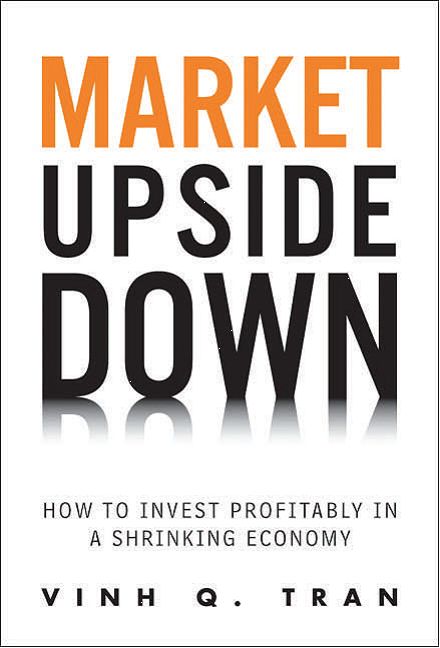June 22 – It is difficult to think of the U.S. experiencing a deflationary cycle like in the 1929 depression, or a la Japan in the last two decades, with its devastating impacts on economic growth and wealth of the nation.
However, as I noted in the previous entry Manic Depressive, CPI ex. food and energy has been decelerating. Since December 2008, core CPI has risen at less than 2% year-on-year. A small pick-up toward the end of 2009 with the approaching Christmas season gave way to a rise of only 1.48% in January 2010, from 1.8% in the preceding December. Last month, it rose only 0.97%, slipping from 1% in April*. This rate is well below the Fed’s informal target of 1.5% to 2%, while interest rates are at near-zero and, according to some, the equity market is in a bull run, presumably because the economic recovery is viewed to be on track.
CPI rose at a declining rate that averaged 1.6% between 2003 and 2004, in the aftermath of the 2000 to 2002 recession. However, as the economic recovery gained momentum, core CPI again climbed at 2.3% on average between 2005 and 2007.
This time, it is different. Economic growth is expected to slow down significantly in 2010-2011 as the fiscal stimulus or AARA (American Reinvestment and Recovery Act of 2009) turned into a drag on the economy starting in the second half this year. Many economists are now fearful of increasing chances of a double dip recession, especially after the big drop in retail sales last month. Even Fed Chairman Bernanke has sounded a cautious note: “My best guess is that we’ll have a continued recovery, but it won’t feel terrific.”
An economic slowdown or double dip will do little to reverse the march toward deflation.
Under these conditions, it is peculiar that last week in a WSJ piece, the former Fed Chairman Alan Greenspan, the champion of easy money and bank deregulation that brought on the boom-bust cycle in the last decade, joined the born-again deficit hawks in calling for cutting the Federal budget deficits.
On the eve of Greece’s debt implosion, Greenspan called for “a tectonic shift in fiscal policy” in the U.S. as well as most of the rest of the developed economies. It would be “none too soon,” he said. He warned that “[d]espite the surge in federal debt to the public during the past 18 months—to $8.6 trillion from $5.5 trillion—inflation and long-term interest rates, the typical symptoms of fiscal excess, have remained remarkably subdued. This is regrettable, because it is fostering a sense of complacency that can have dire consequences.” He noted that “[i]t is little comfort that the dollar is still the least worst of the major fiat currencies. But the inexorable rise in the price of gold [i.e., the decline of the dollar in terms of gold] indicates a large number of investors are seeking a safe haven beyond fiat currencies.”
A consequence of persistent deficits is higher long-term interest rates, and “the Treasury would have to pay much higher interest rates to market its newly issued [debt] securities.” And “we cannot count on foreigners to finance our current account deficit indefinitely.” Greenspan pointed out that “long-term rate increases can emerge with unexpected suddenness.” Already the market has priced 10-year Treasury notes as riskier than indebtedness of large corporations; evidenced by the narrowing of the swap spread of such durations to a minus 13 basis points, from a positive 77 basis points as recent as September 2008; the so-called “canary in the coal mine.”
All of these are sound warnings, as I had discussed at length and warned in Market upside Down. In the introduction to the book, I wrote, ‘When the next crisis comes, where will the U.S. and its citizens find the resources to combat and recover? Except that the Federal Reserve may crank up the printing press at full speed. But the global markets have a way to express their displeasure, through soaring interest rates, the dollar’s collapse and sell-offs of stocks prices. By the time the next crisis rears its head, when the effects of “the massive shots in the arm” [through fiscal deficits] have worn off, the pain and patience of real people may reach the nadir. Confidence may be replaced by recognition and fear of even darker days ahead. Without confidence and optimism, the values of the stock certificates will simply evaporate.”
Curiously, Greenspan dismissed concerns of the contracting effects of fiscal cuts on the economy. “I believe the fears of budget contraction inducing a renewed decline of economic activity are misplaced.” Really?
The list of the ailments infecting the economy is lengthy. From high unemployment rate and record numbers of the long-term unemployed to the distressed housing market and commercial real estate, from depressed personal savings which have hovered at the bottom despite much hype about improved savings rates, to the low rates of capacity utilization that have languished near the worst levels experienced in the 1973-75 and 1981-82 recessions, there is no bright spot except hiring by the Federal government. Additionally, transfer payments have risen to a record level of 18.2% of personal income.
So, how is that budget cuts would not further depress the economy?
Unfortunately, as I pointed out in Market Upside Down, the United States is facing two imperatives: one is the need to cut debt; the other is the need to borrow more in order to stimulate economic growth. Since private sector balance sheets are already over-leveraged, only the Federal government is creditworthy –that is, at least until the credit rating agencies decide to act on their warnings and downgrade U.S. Treasuries’ credit-risk-free privileged status.
At the same time, as I observed last year, “[t]he [Federal] government should find its budget deficits and record debt load make it difficult if not impossible to get a trillion dollars here, another there for bailout and stimulus spending.” The debt crisis facing PIIGS and the rising volume of the deficit-cutting chorus joined by luminaries such as Alan Greenspan and the newly elected British Prime Minister David Cameron only spotlight the precarious position the U.S. has found itself trapped in.
How the U.S. as a nation and the world’s largest and dominant economy works itself out of this morass will determine the future of a generation to come –possibly across the entire globe.
*Note: GDP price deflator has been dropping off sharply with the first quarter 2010 registered at only 0.5%, far below the norms during the 2003-2007 expansion.


